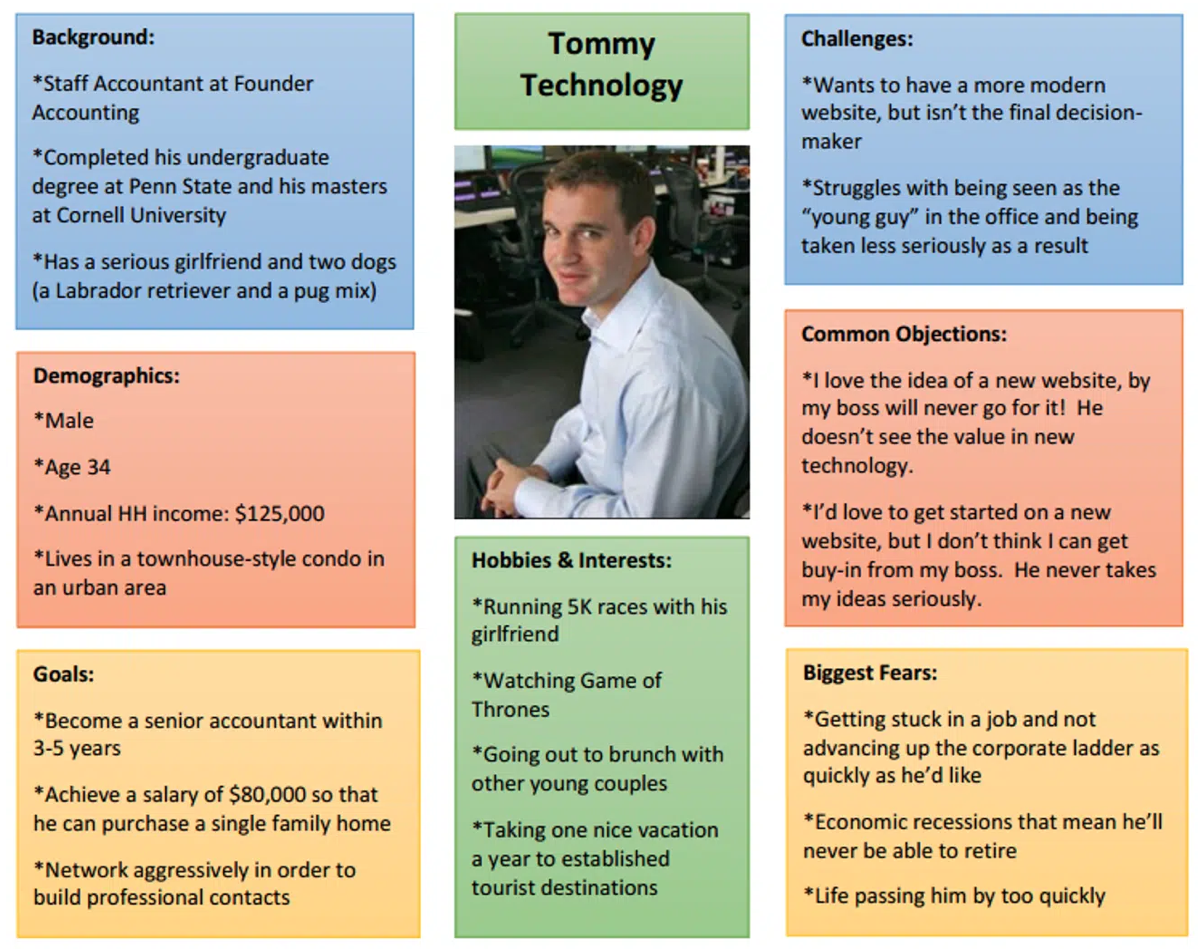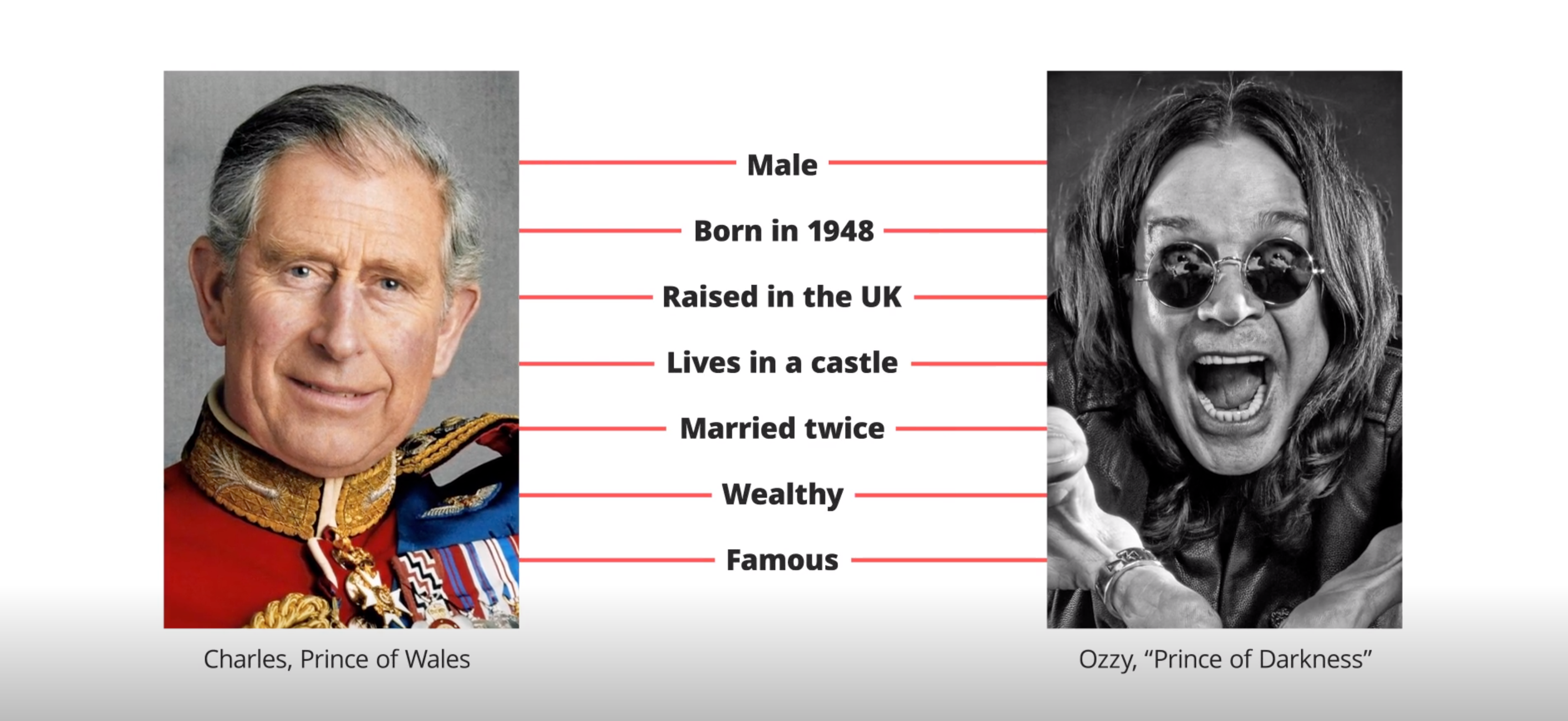The Purpose of Personas
At some point in a brand project, we’re faced with a persona. These can have many names, marketing/buyer/user persona, but they are usually a one slide archetype that represents an idealised customer.
They are chockablock full of information, steeped in internal data, and hopefully cross-referenced with external sources. Usually the slide looks like this:

You could say I have a love / hate relationship with personas. I love them in the way you love watching the latest episode of [insert favourite reality show title here]. They’re usually so bad that they’re good. When it comes to personas, I sit back and take it all in; the alliterative names, the demographics, the life scenarios and behavioural anecdotes –and much like at the end of an episode of that reality show, I’m left asking myself, “what the hell was that?!” And therein lies the hate part of the equation. But it doesn’t have to be like that.
Going back to our Tommy Technology example, I won’t beat around the bush; this is what I would consider a bad persona. Background...okay. Fears...interesting. Challenges...now we’re getting somewhere. Hobbies & interests...you lost me. Perhaps some of this is valuable information for this particular business, but the question is, what are we using this persona to accomplish? Does it help us create useful, meaningful messaging? And how does Tommy Technology having a lab and pug mix help us do this?
A formula for personas almost always starts with your standard demographics, identifiers like age, gender, and income. The problem with overly emphasising demographics in your personas is that they easily fall into the trap of age-old stereotyping. When you layer in anecdotes like what they like to do on the weekend or quotes that may represent a narrow personal opinion, it only reinforces that stereotype.
The problem with a stereotyped persona is that it is too vague and about as useful as using your horoscope to make a major life decision.
Don’t get me wrong, I love a good horoscope. Because like personas, they’re humanising – I can see a bit of myself in them. But if my horoscope tells me this month I’m going to come into a large sum of money, I’m hardly going to come into work the next day to submit my resignation to prepare for a new life of luxury on a private island. A horoscope is interesting, but it’s not useful. That is exactly what you don’t want your personas to become – not useful.
If the purpose of personas is to help marketers segment and target their audience, create effective messaging and provide a personalised customer experience, then we’ll need to go a bit deeper.
Here are three things to keep in mind when working with personas:
Demographics rarely tell you why a person makes a decision.
Understanding demographics is an important way to start building your marketing plan, but if that’s all you’re doing, then you could be wasting your resources and time. Most concerning, you could be saying the wrong thing to the right consumer, or the right thing to people who aren’t even aware of you.
It used to be that demographic information was the only way to segment an audience, but that’s no longer the case. There is now a wealth of consumer data available to layer in attitudinal and behavioural insights, which will give you much more relevant and valuable personas.
The most effective example I’ve seen of the disparity between demographics and reality has been on the go for a while now, but most recently I saw it used in a Section4 lecture by April Dunford.
In keeping with the reality TV analogy, these two men are the same “type on paper.” But in the real world, they couldn’t be any more different.

Understanding your customer journey will give you much-needed context.
It's really helpful when establishing a foundation for your personas. The way one persona may experience or interact with your brand may be totally different to someone else. Take your personas through the customer experience and identify the pain points or barriers they may experience along the way; you might find some glaring differences.
Equally, you may start to understand the emotional state of the consumer at various points in their journey. This allows you to use that insight to improve your customer experience and/or tailor your messaging to different personas.
Avoid the fluff if you want your personas to live outside of a drawer.
Fluff can be defined any number of ways. But what’s the opposite of fluff? Relevance. As you develop your personas, ask yourself, ‘so what?’ Why do I need to know this? Is it important? Who does this help?
If you have personas but don’t have the answers to these questions, think about this – when was the last time you used your personas?
I’m not here to make a sweeping case for or against personas because the fact is, they may work for some businesses and not for others. But if you use them, I hope this article makes you think about how you could use them, or how you could optimise your existing personas in a way that helps you achieve your goals as a business. No more “what the hell did I just read” when it comes to personas, if not for yourself, do it for Tommy Technology.